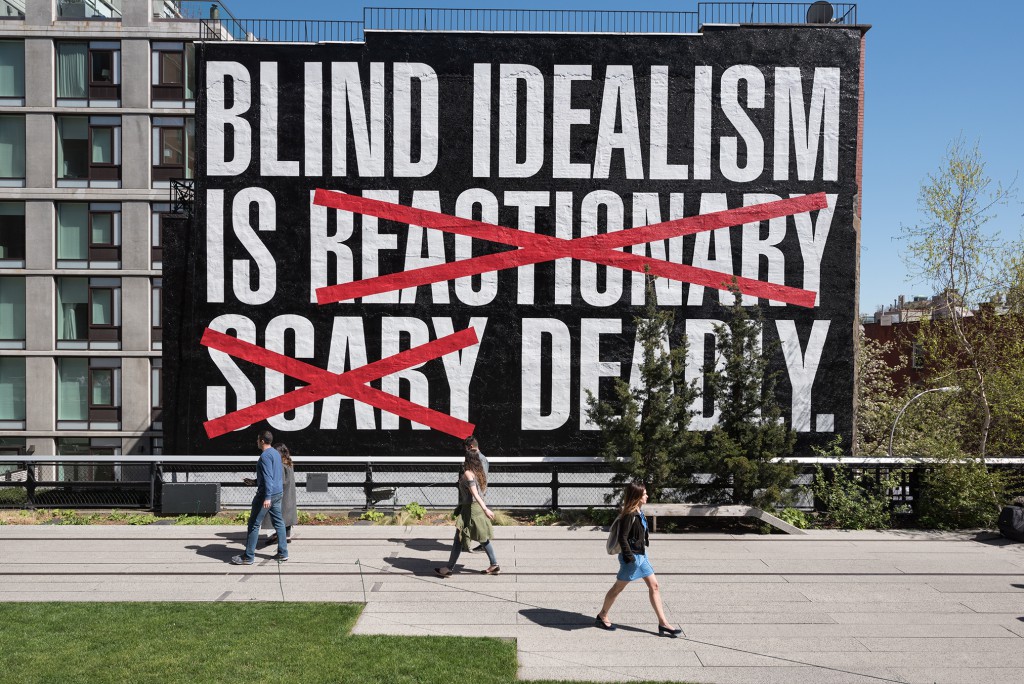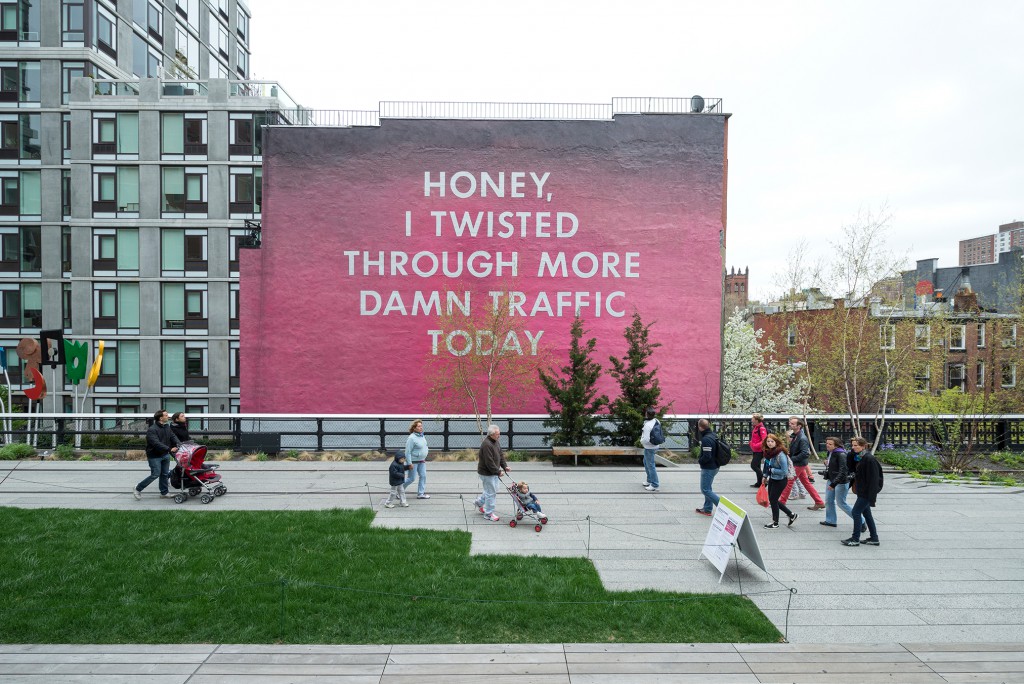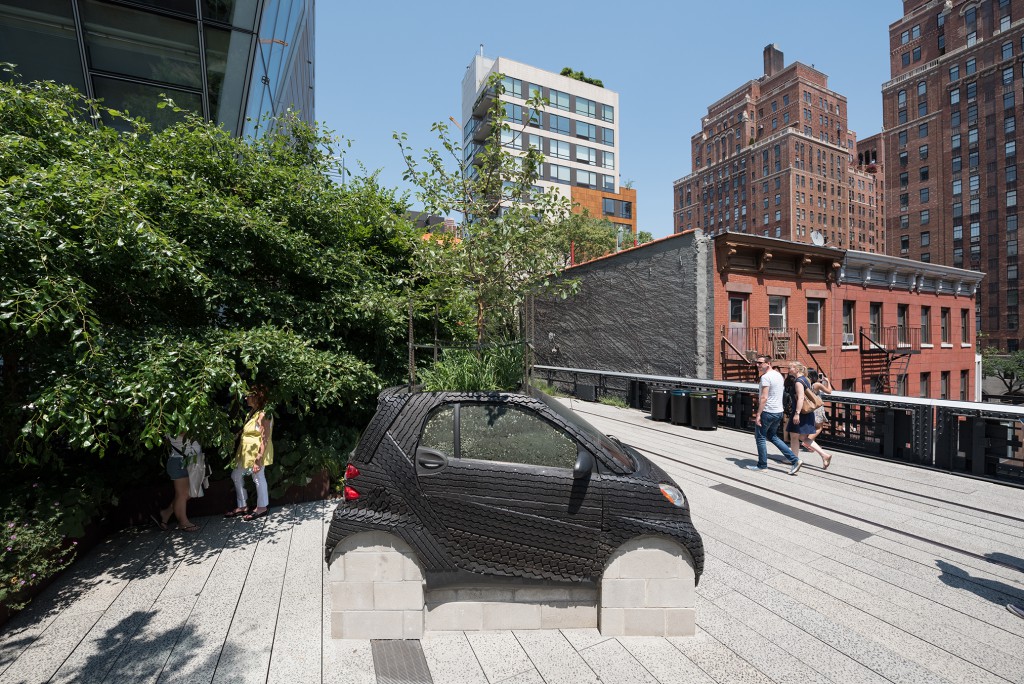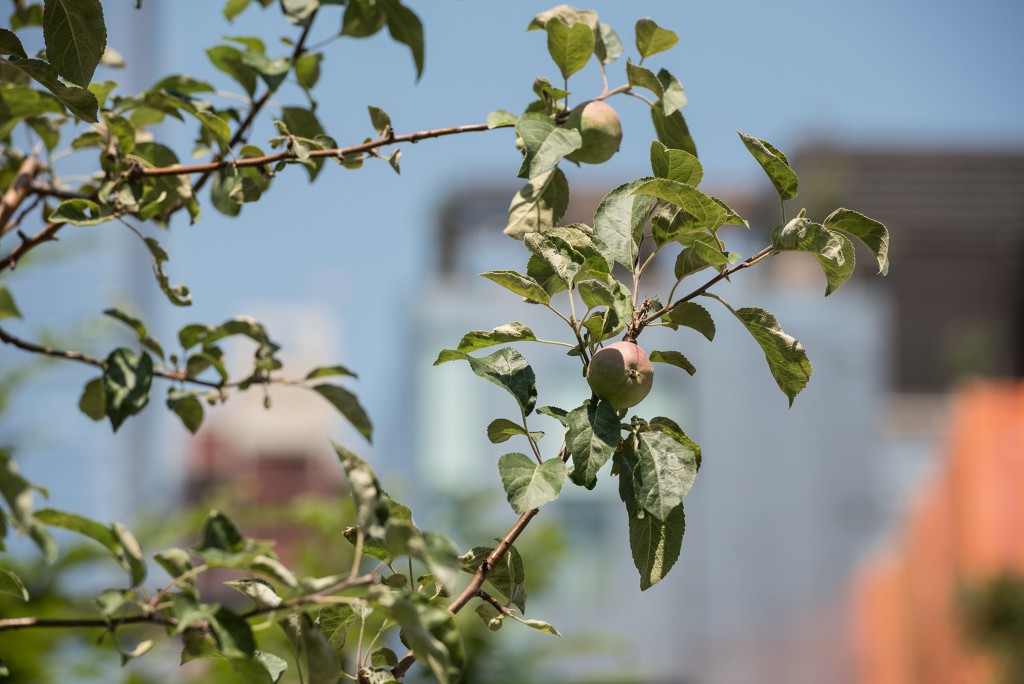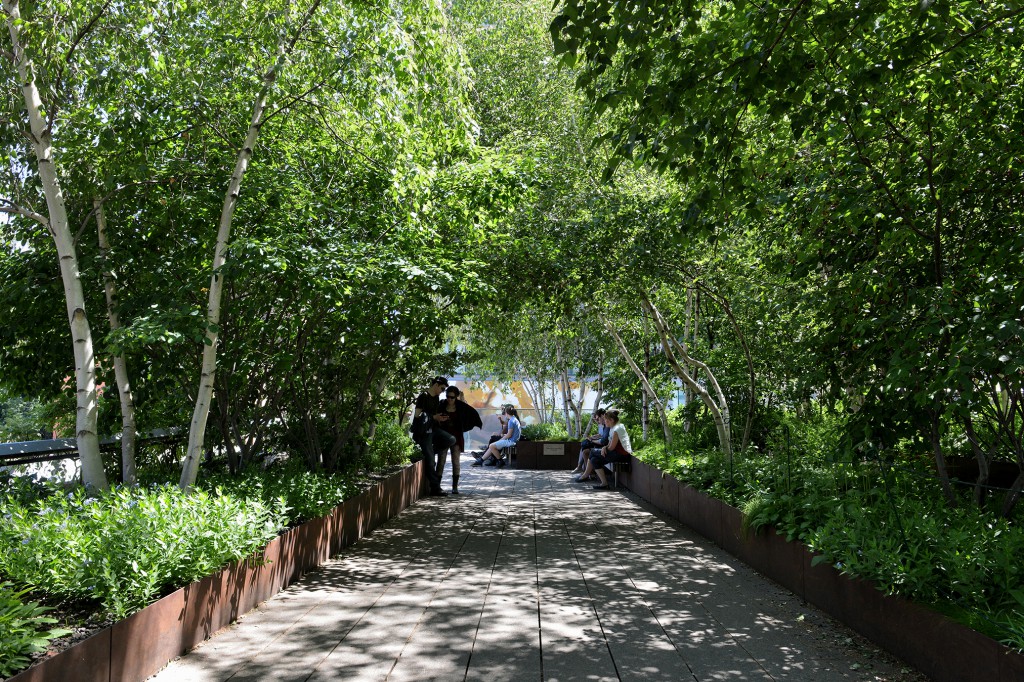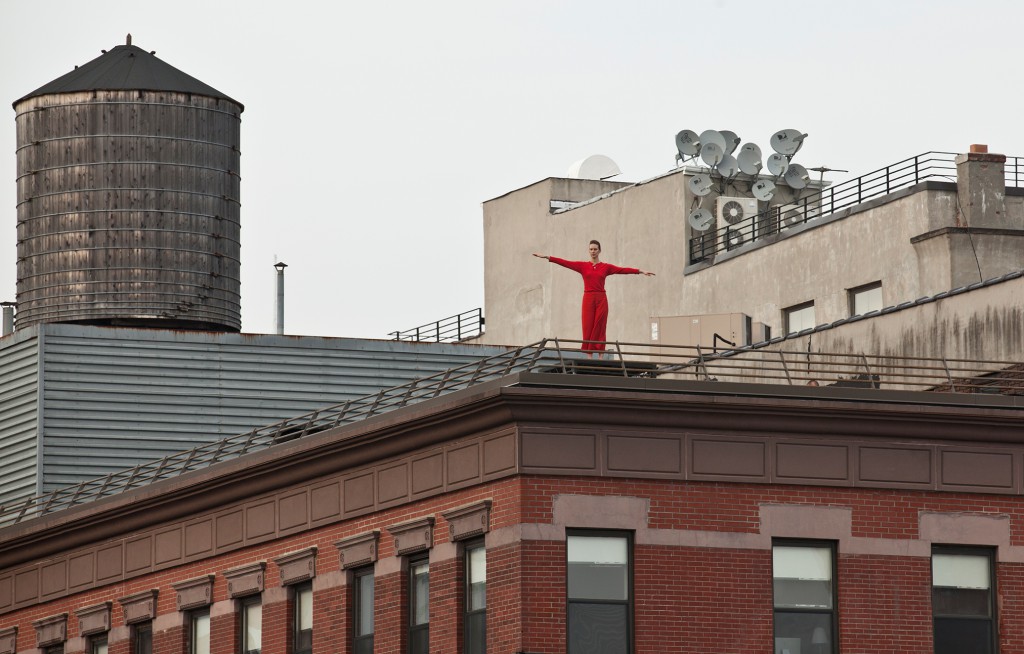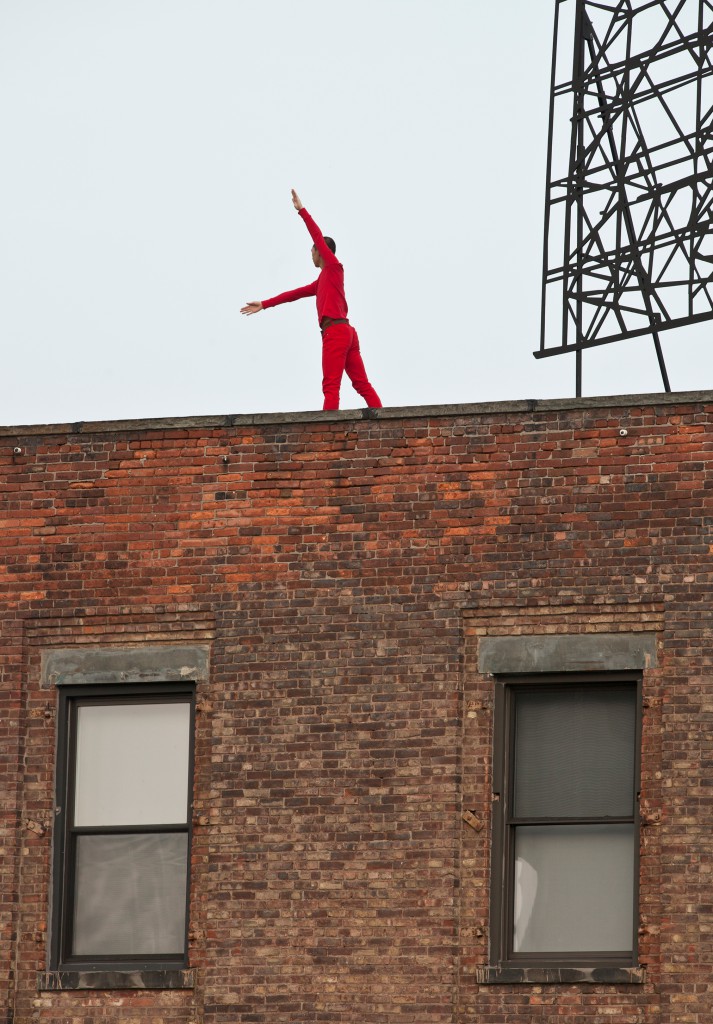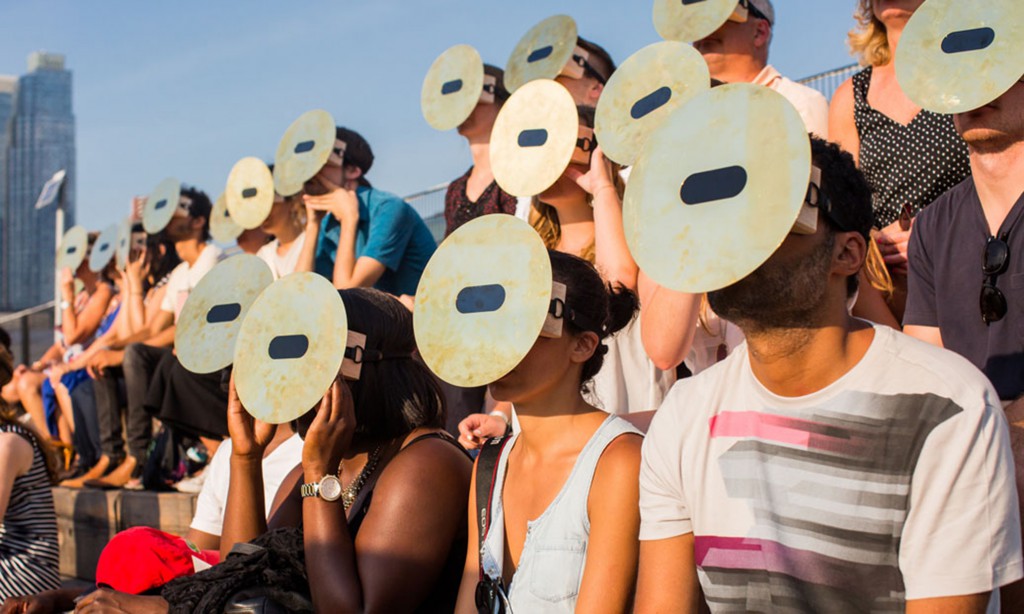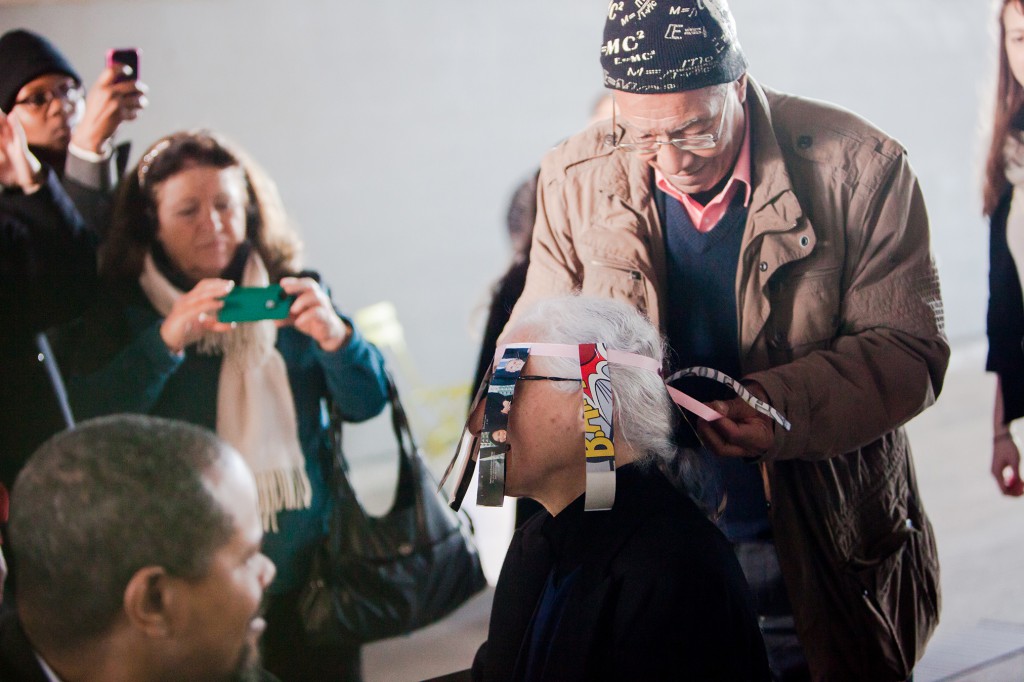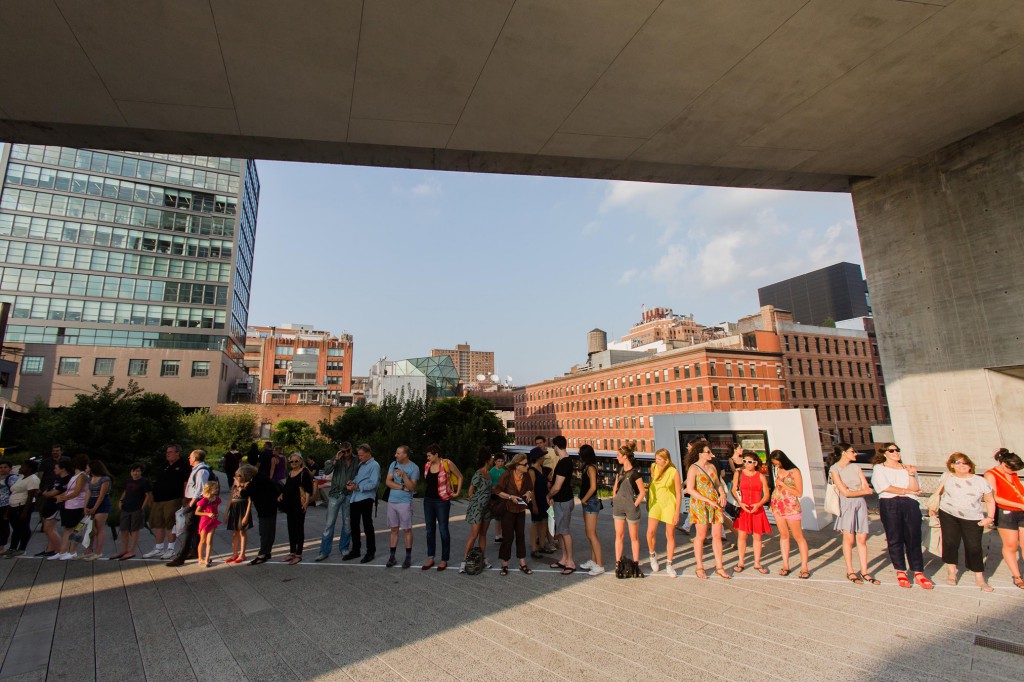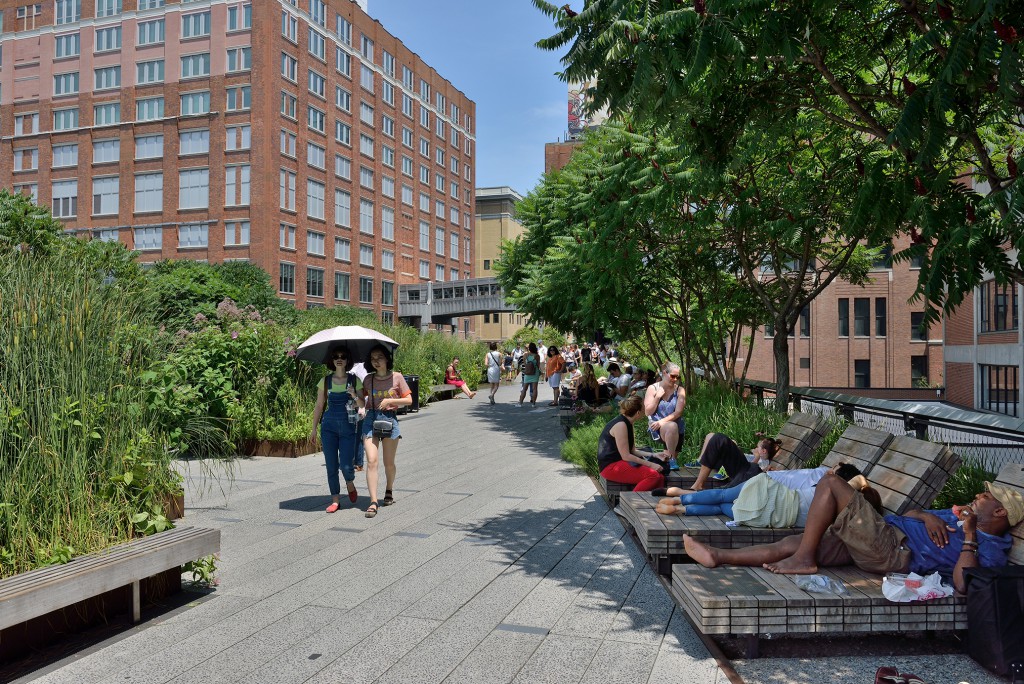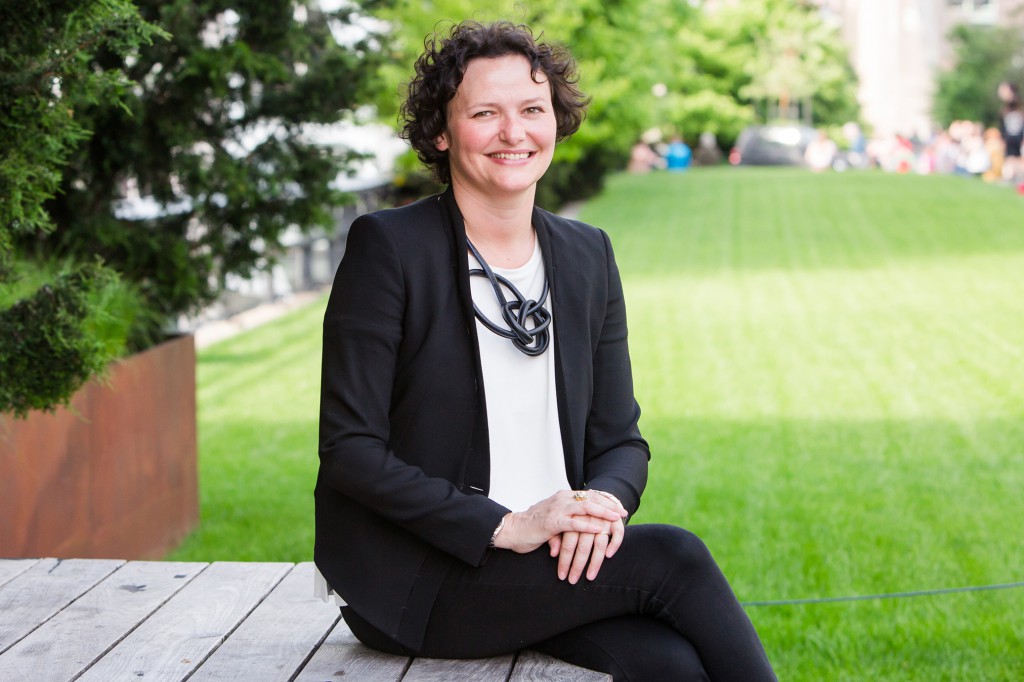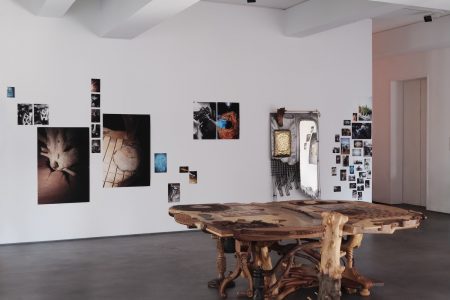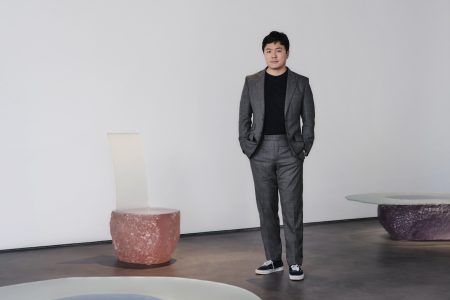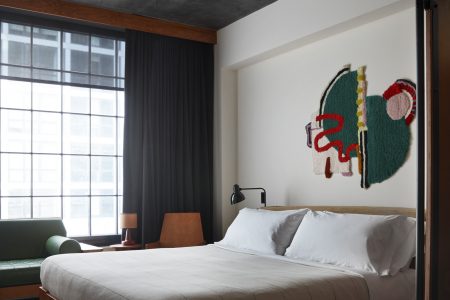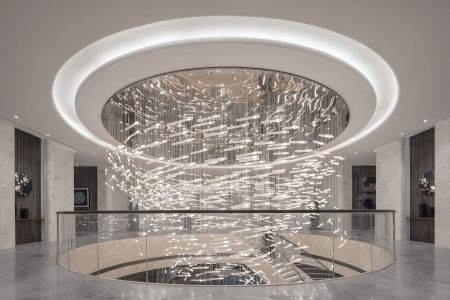Cecilia Alemani on High Line
Cecilia Alemani, director of the High Line park’s contemporary public art programme in New York, spoke to TLmag.
Imagine walking between sky and earth. You are in the noisiest, most dynamic and most turbulent city of them all, but now you find yourself in a peaceful retreat. You see asphalt, brick buildings and traffic around you, but you walk on a verdant carpet and could reach out and touch soft, high grasses, flowering trees, an apple tree planted in a car and all kinds of inscriptions. “Honey, I twisted through more damn traffic today,” reads Ed Ruscha’s complaint; Barbara Kruger’s mural declares, “Blind idealism is reactionary scary deadly”; the young artist Kathryn Andrews alerts passers-by, “Beyond this point you may encounter nude sunbathers.” No sooner have you emerged from one reverie than the messages plunge you into an even wilder one.
In New York, as in most Western cities, public spaces are saturated with all kinds of signs—business awnings, billboards, itinerant vendors’ placards, and subway, street and road signs. Buildings often act as signs themselves, joining the joyous graphic cacophony. For several years, the High Line has been offering a new perspective on New York to residents and visitors alike. This urban promenade, built along a defunct railroad repurposed as a new, free space at the heart of the Big Apple, offers plenty of aesthetic interest. On behalf of TLmag, I met with Cecilia Alemani, director of the High Line park’s contemporary public art program, to learn more. We took a walk on the High Line, in Manhattan’s Lower West Side.
TLmag: What exactly is the High Line?
Cecilia Alemani: The High Line is an elevated railway built in Manhattan in the 1930s that fell into disuse in the 1980s and was made into a public garden in 2009. It is a hybrid space combining an industrial past with nature, design, architecture and art that attracts eight million visitors each year.
TLmag: What is your role at the High Line?
C.A.: I supervise the arts program. My team and I choose the artists. We commission new works, monitor the production and installation and make sure they are accessible to all our visitors.
TLmag: How did you arrive here at the High Line in New York, more specifically at its arts program?
C.A.: I have a philosophy degree from the University of Milan, with a specialization in aesthetics. That’s how I first encountered the field of contemporary art. I came to New York in 2003 to do a master’s degree in curatorial studies for contemporary art at Bard College. New York is the heart of the contemporary art world, with the best museums, galleries, collective art spaces and artists. And now it’s my home.
TLmag: When people visit New York, they see an incredible profusion of signs, practically none of them with any relation to art, poetry or any kind of personal expression. Does the High Line aim to create a space for free expression and debate within the city?
C.A.: Absolutely! Through the arts program, we intend to spark conversations, encourage sharing of opinions and promote public debate. Artists from whom we commission works sometimes take inspiration from the signs around the High Line to create their pieces. For example, Kathryn Andrews’s sculpture, Sunbathers I, reads: “Beyond this point you may encounter nude sunbathers.” Placed on the High Line, where nudity is prohibited, the work directs people’s attention to the billboards that surround the space.
TLmag: Do you think that the public space acts on the works in a certain way? And do you think that, in turn, the works in this public space act on visitors in a specific way, different from how they would in a museum or gallery?
C.A.: The art on the High Line changes visitors’ experience without a doubt. One of our main goals is to offer a unique encounter with contemporary art to the numerous and diverse visitors who come to the High Line. We commission highly varied installations, performances and videos that create an environment unlike any other in all of contemporary art. What interests me is provoking an encounter—surprising, enriching or even disturbing—between art and visitor. I think that the power of art to generate a conversation lies in that encounter. For that, there’s no better place than a public garden!
TLmag: Among all the types of art present on the High Line, it seems that the performances have more impact than any other medium. Would you agree?
C.A.: All our works arouse curiosity and trigger a reaction from visitors. But our performances also have an element of surprise. They welcome audiences by surprising them. Passers-by who weren’t in the know can arrive just as a performance begins, enjoy it, try to learn more and in doing so, discover an artist. And most of our performances offer a chance for audiences to participate!
TLmag: What is your definition of art, today, as seen from the High Line?
C.A.: I’ll just quote two of the greatest artists of our time, Gilbert & George: “Art for All!”
